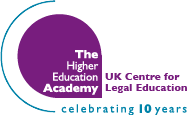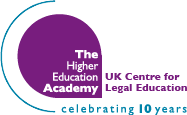A romantic revolution in legal education

contributors | abstract | presentation | biographies
Contributors
Dr Dawn Watkins (University of Leicester)
Format
Paper presentation
Abstract
The caged bird sings with a fearful trill
of things unknown but longed for still
and his tune is heard on the distant hill
for the caged bird sings of freedom.
— An extract from I know why the caged bird sings by Maya Angelou
Until the late Eighteenth century, writers and artists were bound by fixed rules as to what constituted the highest forms of art. Sir Joshua Reynolds (1723-92), for example, had informed his students that
Invention is one of the great marks of genius; but if we consult experience, we shall find that it is by being conversant with the inventions of others that we learn to invent. Wark R (ed.), Joshua Reynolds: Discourses on Art, (New Haven & London, Yale University Press, 1975), p.98.
and thus he impressed upon them the need to study the great masters and to seek openly to emulate them. William Blake (1757-1827) was one of the first to criticise this view. For Blake, “One Power alone makes a Poet: Imagination, The Divine Vision.” Bowra CM, The Romantic Imagination, (Oxford, Oxford University Press, 1961), p.14. and for him and the other so-called romantic poets it has been said that the single characteristic which differentiated them from earlier poets was “the importance which they attached to the imagination and the special view which they held of it.“ Bowra CM, The Romantic Imagination, (Oxford, Oxford University Press, 1961), p.1.
The paper examines this critically important period in the Arts and argues that we have reached a similarly critical stage in the field of legal education.
The paper focuses upon two specific areas: firstly, the development or ‘release’ of creative thinking and, secondly, the participatory and autonomous role of the student in his or her legal education. Hence there will be a critical consideration of James Boyd White’s The Legal Imagination Abridged Edition (Chicago, University of Chicago Press, 1985), unabridged edition first published 1973. There will also be a consideration of the role of problem-solving in developing student autonomy, particularly within a group setting. As C.S. Lewis observed:
The fellow pupil can help more than the master because he knows less. The difficulty we want him to explain is one he has recently met. The expert met it so long ago that he has forgotten. He sees the whole subject, by now, in such a different light that he cannot conceive what is really troubling the pupil; he sees a dozen other difficulties which ought to be troubling him but aren’t”.
— CS Lewis, Reflection on the Psalms (London, Collins, 1958), p.9
In the field of painting, Joseph Turner (1775-1851) and John Constable (1776-1837) have been described as
The artists who broke more radically and decisively with the assumptions of the past than any who have come after them”.
— Graham Dixon, A History of British Art (BBC Books, London, 1996), p.126.
It is submitted that a proper understanding of the study of law as ‘liberal arts’ education provides – or at least should provide – the law student with an arena in which he or she is free to do the same.
Presentation
Short biographies of panel members
Dawn Watkins took up a full time lectureship in the School of Law, University of Leicester in February 2005, having completed her PhD under a Research Scholarship at the University. The title of her PhD is The Protection of High Art in a Postmodern Age. Dawn continues to research in the area of Law and Humanities, as well as in legal education. She is a qualified Solicitor and has taught aspects of the LPC on a sessional basis for Nottingham Law School. She has also worked as an Associate Lecturer for the Open University (in conjunction with the College of Law). Dawn currently teaches Equity and Trusts, Family Law and Postgraduate Research methods.
Last Modified: 7 February 2011



Comments
There are no comments at this time